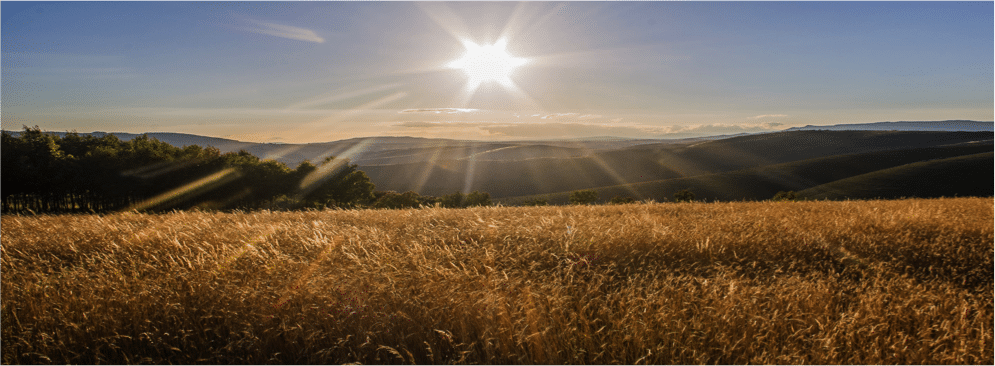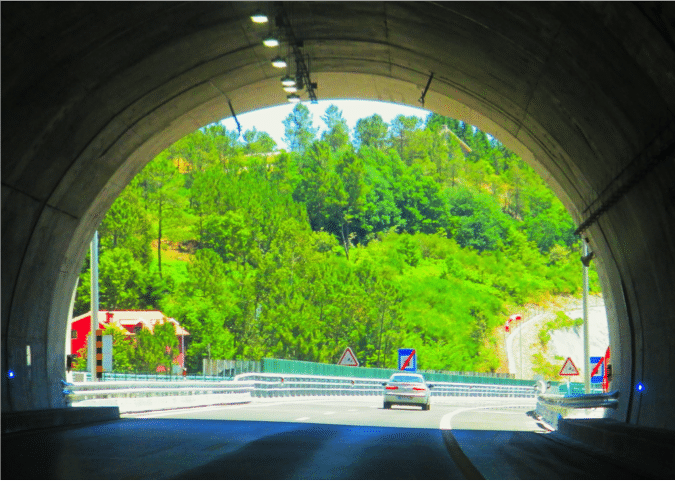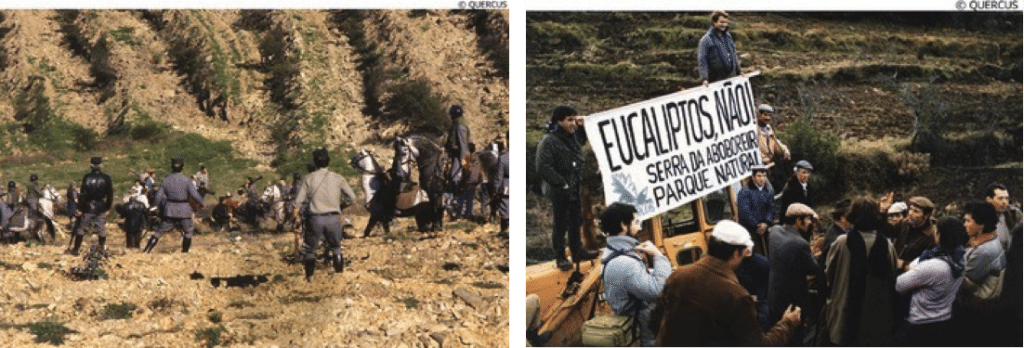
“Para lá de Marão, mandam os que lá estão”-
“At the other side of Marão, govern those who are there”
(traditional Portuguese saying)
Last week, Elisabete, Sandra and me crossed the recently inaugurated tunnel of Marão to meet with BALADI, the national federation of common lands of Portugal which is located in the region of Trás-os-Montes. This tunnel of 6 km goes under the massive mountains of Marão. These mountains have isolated Trás-os-montes communities during centuries, resulting in paradigmatic and unique ways of governing and ruling their lands. While crossing it, we reflected on how this tunnel (which has considerably improved accessibility) will change the region – now the region conserves the biggest surfaces of common lands in Portugal (called baldios) while holding incredible rates of depopulation and abandonment. Our interview with BALADI, intended to explore the possibilities of developing innovative place-based sustainable initiatives in these baldios as a strategy to build resilient rural communities. I will here summarise the main insights given by setting baldios in its historical context and presenting the main future challenges to address -hopefully within my project: Managing the Commons.

Common lands in Portugal date from the XII century where communities allocated flat areas around their villages for agricultural use, and more isolated and hilly areas for communal pastures and forests. Communal lands were used for livestock rearing (and bedding), firewood and green manure for crops (Batista, 2011). Common lands allowed communities to have larger surfaces for their livestock to graze, to design common rules adapted to the specific conditions of each year and share the benefits among community members (accomplishing also a role of wealth distribution) (Rodriges, 1999). Indeed, these are some of the design principles that the Nobel prize winner, Elinor Ostrom, stated for a long-lasting and sustainable resource system (Ostrom, 1990). In the XIX century, these common lands experienced the first massive wave of expropriation. After a liberal constitutional reform, common lands were handed out to private owners in view of converting them to arable lands. The expropriation was legitimated for the sake of economic development arguing that common property rights regimes were an inefficient regime that leaded to land abandonment (Fernández Moya and Montañez Pico, 2013).
With the Portuguese military dictatorship initiated in 1926, the State Forest Services took the management rights of the commoners with the strategy of boosting economic development in rural areas. Again, the “presumed” abandonment of common lands supported the government to undertake a huge reforestation plan of baldios against communities’ will, whose livelihoods relied on the appropriation of common lands as grasslands. Communities were violently suppressed and forest works ended reforesting 420.000 ha of baldios (image below, left).

During the second half of the XX century, and mainly after the fall of the military regime in 1974, the governmental support to the forestry sector extended to foretaste private lands, and to the establishment of an emerging forest industry for the transformation of cellulose. This was the beginning of the current spread of the Eucalyptus in the Centre and North of Portugal, that had also many detractors (image above, right) (Serra, R., Barca, S. and Meira, 2015). But the fall of the regime also brought opportunities for commoners. The Portuguese constitution of 1976 recognized common property rights of communities as a legitimate right providing multiple services to society and the Law of baldios of 1993 formalized the constitution and management of common lands through associations of neighbors, or by a co-management scheme between the government and the community. These two legal documents set up the stage of the current challenges and opportunities of common lands in Portugal.
After 40 years of democracy, common lands in Portugal are still in transition from a remnant traditional agro-pastoral economy to a social economy which practices and uses are inserted in the current globalized local dynamics (Batista, 2011). The challenges of this transition are several, but are at the heart of current rural social movements in Northern Portugal that try to halt the many negative trends of globalization: expansion of Eucalyptus for the benefit of the paper industry, depopulation and ageing trends, and increased fires frequency and intensity due (mainly) to the abandonment of forest uses. Whether this transition results in the development of resilient rural communities depends on reinforcing the villagers’ institutional capacities for controlling and managing their lands.
My research within SUSPLACE intends to start a “commoning” process that builds resilient communities by re-connecting communities to their forests. I will take insights from successful commonly-managed (and benefited) common lands and design an agenda for commoning baldios with abandonment trends. The first case analyzed will be in Portugal where BALADI is engaged in promoting new uses of common lands and institutionalising new management regimes in Trás-os-montes by grouping several baldios associations. The second case is located in North Spain, a region where common lands have succeeded to create a common and multifunctional management supporting rural community’s livelihood (see the link for more information http://vincios.org/en/the-project/). The commoning project will intend to create a dynamic “island of innovation”, in which ways for building resilient rural communities can be tested. The biggest challenge will be to navigate a transformation in a context of low agency due to depopulation and ageing. This challenge is not only relevant for the many rural areas that suffer from abandonment in Europe, but is also a question that is not fully addressed in the literature about social-ecological systems transformations (see Westley et al., 2013). I hope my project can give some insights on this issue.
On behalf of all the team of the University of Aveiro, I thank Armando, Susana and Pedro from BALADI for the insightful discussion.
References
- Batista, O., 2011. Os baldios. Autonomia e desenvolvimento local, in: 1o Congreasso Europeio Das Áreas Comunitárias, 23 E 24 Septembro 2011. BALADI, Vila Real, Portugal.
- Fernández Moya, E., Montañez Pico, D., 2013. Somonte and Aviados: two common experiences on the iberian peninsula. Nómadas 121–135.
- Ostrom, E., 1990. Governing the Commons: The Evolution of Institutions for Collective Action. Cambridge University Press.
- Rodriges, O.I.A., 1999. O Ciclo de um baldio: uso, expulsão e abandono. 1o Encontro Galiza-Portugal Estud. Rurais 1–13.
- Serra, R., Barca, S. and Meira, T., 2015. Eucalyptus monoculture and common lands, Portugal [WWW Document]. Environ. Justice Atlas. URL https://ejatlas.org/conflict/eucalyptus-monoculture-and-common-lands-portugal
- Westley, F., Tjornbo, O., Schultz, L., 2013. A theory of transformative agency in linked social-ecological systems. Ecol. Soc. 18, 27.
